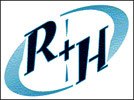Juniko Moody speaks with the major studios' recruiters and relates what they had to say about their current hiring philosophies and needs.
From the West Coast to the East Coast, the trend this year is "back to basics," with most studios looking for well-rounded, experienced generalists who have strengths in both technology and art. Most facilities agree that while SIGGRAPH is a great information-exchange forum and meeting place, few candidates are actually hired immediately after SIGGRAPH. With the industry's everyday recruiting strategy utilizing referrals and Web sites, there is little dependence upon a concerted once-a-year recruiting effort. However, recruiting continues because SIGGRAPH is so conducive to building relationships and allowing both prospective employers and employees to learn more about one another.

Among the following medium-to-large companies, the forecast includes more CGI animation, more feature films and more digital effects, but this growth doesn't necessarily translate into volume hiring. Most agree that it is quality, not quantity, that is desired. Since most studios have already staffed their main team of employees, they now can concentrate on amassing a supply of possible per-project candidates for upcoming projects.
There are more schools dedicated to developing entertainment artists and technologists then ever before, and thus more candidates, but the common lament remains that quality people are hard to find. Most studios enlist their recruiters to advise universities and other training institutions on the education and set of skills necessary for potential employees, in the hopes of affecting curricula and creating an ideal employee pool. Educational institutions change slowly, so the immediate solution still is to rely on screening numerous candidates worldwide. All studios have Web sites and internship programs, which makes recruiting easier.

Now that digital effects have been widely used for so many years, there is a larger number of experienced practitioners available. Evidence of digital effects longevity is Pacific Data Images, now celebrating its 20th anniversary. This year's SIGGRAPH was recruiting director Marilyn Friedman's seventh with PDI. "We have a short-term and long-term approach," she said. "The short-term objective is to fill immediate positions, while the long-term goal is to build relationships which may be fruitful in the future."
With Shrek in full production, only a couple of lighting and effects positions remain unfilled at PDI. The company recently wrapped Robert Redford's feature The Legend of Bagger Vance, to be released in November. Looking forward to its third animated feature, Tusker, with the Imax version of Shrek in the works, the longest-lived digital effects studio is enjoying an infusion of new business from current major stockholder DreamWorks. Friedman said, "Our planning has been enhanced by knowing that there are several feature films in the future, due to DreamWorks."
There are a variety of openings to be filled over an extended period of time. PDI generally looks for people with two to five years of production experience and focuses on skills and education. Its digital artists must know UNIX and shell scripting. Friedman refrains from using opposing titles such as "artists" and "technicians"; she prefers to describe PDI employees as "people who create imagery and people who enable the creation of imagery." Artists and technical directors are both essential to the process.
PDI seldom hires recent graduates, but currently it has several entry-level positions open. PDI does not offer internships or scholarships. Its Web site posts announcements and job opportunities regularly.
Digital Domain also is enjoying a successful period while completing How the Grinch Stole Christmas. "Our goal has been to become our own production company, and we are moving toward our goal in significant ways," said Laurence Plotkin, director of human resources and recruitment at DD.
Employees from each department staffed the DD booth: 2D, 3D, character animation, TD and software. They handed out postcards with software, job and contact information, while showcasing past work. They did not collect reels or resumes but instead presented an opportunity to meet and talk. Reels and resumes can be sent directly to Digital Domain. The company recruits for two purposes: to add to its core team of artists and to identify people with specific sets of skills who can be called upon quickly when a new project begins. "The number of people we are looking for is actually a result of who we meet," Plotkin said.
Asked to describe the Digital Domain culture, Plotkin responded, "We have a unique environment compared to other studios. Because many of our staff have been at Digital Domain since the beginning, we have a casual, young, energetic yet relaxed atmosphere that is fraternal and low-key. Our location also contributes to our culture. Many of our most successful artists were groomed internally and gained experience in a peer system that takes time to teach and learn. Our artists are intense, self-managed adults capable of working both independently and as a team."
Finding someone who's a good fit means meeting well-rounded people, Plotkin said. "We can add to the core team that will complement our ability to handle complex projects." Plotkin credited two main factors for the broad-based search strategies used by Digital Domain and other studios: difficulty in predicting candidate success on the job and competition among facilities. These factors cause each studio to seek out the top two or three candidates and to be ever on the lookout for fresh new talent and potential.
"There are a huge number of schools and graduates," Plotkin said. "Experienced production people and the cumulative years of experience are growing significantly, but the reason we recruit internationally is because talent exists everywhere, and it is my job to look everywhere. We hire internationally because certain schools may consistently produce excellent graduates due to their training, curriculum and access to technology or admission process that attracts ambitious and talented people. Also, many areas of the world focus on artistic development and place a value on artistic growth not always found in the U.S."
Judging candidates by their potential means evaluating their base skill display, because they do not yet have production experience. The criteria for evaluating experienced artists are different from those for newcomers. "There is a direct correlation between the longevity of certain software or techniques and the experience level of collective seasoned candidates," Plotkin said. "Some technology is 8 years old, so we have a broader base of experienced people to choose from, and these people will bring their experience to us."
Plotkin defined DD's core team as consisting primarily of "brilliant-thinking problem solvers with traditional talents in painting, drawing or photography." He also said DD hoped to meet people who want to work with them and to help students and professionals make good career decisions.
Brad Reinke, senior recruiter for Cinesite, concurred with Plotkin. Cinesite also is involved in "specialized recruiting," selecting only the best TD candidates, those with three to five years of production experience. He too keeps a lookout for "rising stars" or fresh new talent through exhibitions like Electronic Theatre.
"In the past there was a need for senior-level personnel," Reinke said. "Then, as software and pipelines improved, it was easier to bring in junior-level artists, train them and put them in a solely artistic role. This resulted in having less technical skill development. Now we've come back around full circle and need experienced people with both skills."
Reinke believes the greatest damage has been done by the numerous short trade programs that teach only software. The longer two-year programs produce students with superior talents, blending art, technology and software. He serves on advisory boards but finds most learning institutions and training facilities reluctant to lose the income generated by the demand for brief, concentrated software courses.
"I often get students who say to me, 'I know Maya inside and out,'" Reinke said, "but we only use 50% of Maya because 25% will not work in our pipeline and 25% was rewritten to work in our pipeline. That means that 50% of the student's time was wasted learning software instead of improving artistic skills. We've always looked for generalists with strong, artistic style." Reinke serves as adviser on the board of Gnomon School of Visual Effects. "Gnomon is a good example of a fine upcoming school," he said. "They integrate skills in the way they train, retrain and cross-train."
Reinke described the Cinesite culture as being relaxed and easy to work in without walls or cubicles, large enough to accommodate several big-budget, high-profile projects yet small enough to retain a "family" atmosphere with free-flowing communication. "Our environment tries to create and nurture personalities who want to be involved in everything," he said. For Reinke, one of the most important advantages to working at Cinesite is "the ability to see the whole production process, no matter what role you play."
On the heels of Stuart Little, the upcoming Hollow Man and Harry Potter and the Sorcerer's Stone, Don Levy of Sony Pictures Imageworks welcomed keen interest from the SIGGRAPH community. "There are fewer than half a dozen enormous projects in the marketplace today. Imageworks is lined up to work on three," Levy said. "One of our priorities we're interested in is meeting shader writers. A lot of the kind of work we're doing looks as good as it does because we develop proprietary shaders that enable us to give our images the very special kinds of look that we're able to achieve. We're also looking for technical directors and character animators. One of the things Imageworks has become respected for is our work in creating digital characters and integrating those characters into live-action environments. A large measure of our success in creating those performances falls upon the shoulders of our digital animation team." Levy also emphasized that "talent knows no borders," inviting applicants from the international community.
Sony's alliance with Sony Pictures Digital Entertainment, a new operating unit of Sony Pictures Entertainment, has broadened the horizons this year for Levy. "All of our broadband initiatives, our online activities at Sony and our gaming unit, Sony Online Entertainment -- which includes EverQuest and the whole Verant Organization, which we have now acquired -- is represented in our booth," Levy said. "We will now be able to engage talent from a broader cross section of talent as broadband comes into play. The computer graphics opportunities are only going to grow, so we now have more opportunities."
Jeff Fino, co-founder and executive producer of Wildbrain, said, "SIGGRAPH is not the best way to find people, but it is a great way to meet people." He said he likes to impact careers by imparting advice, adding, "Information exchange is the most important aspect of SIGGRAPH."

Wildbrain is looking for generalists who like to work on a wide variety of projects, including commercials and film. "Our employees might work on a commercial one week, then a short film or television series development the next week," Fino said. "We work on various types of projects." Top on Wildbrain's list was Internet animation. "We started modestly with 2D cartoons," Fino said, "but we are aggressively pursuing more 2D and 3D animation."
Fino said he has tended to find more artists than producers and production managers at SIGGRAPH, and noted it's sometimes difficult to attract people to the Bay Area due to its high cost of living. Like other studios, Wildbrain recruits internationally, a task made easier by the Internet, which has yielded a diverse workplace. The company is selectively searching to fill two to five positions. "We have a free-flowing environment with lots of creativity," Fino said. "We are a corporation with deadlines and clients, but a creative environment needs a little exemption from the norm." Offering challenging work, Wildbrain also rewards creativity. "Animation is a merit-based system," Fino said.

Another Bay Area company, Pixar Animation Studios, also is looking for the right blend of artists and technologists. Pixar reps describe the ideal TD as having knowledge of UNIX programming/scripting and extensive 3D graphics experience in modeling, lighting and shading using Alias|Wavefront and Softimage. Also useful is an education in computer science, mathematics or engineering with an art background and a thorough understanding of physical motion, weight, balance, texture and form. Pixar also is looking for graphics software engineers, animators and layout artists.
In New York, the approach is the same. Chuck Richardson of Blue Sky Studios said, "We are finishing a major recruiting effort that started at last year's SIGGRAPH to staff up for feature production. We increased our crew by about 150%. We still have approximately 10-15 TD and character-animator positions open."

As to requirements, Richardson said, "Our antennae are always out for bright, talented, skilled, dedicated, spirited, determined, obsessive, imaginative individuals. Having strong softball skills is a plus." In addition to SIGGRAPH recruiting -- which for Blue Sky usually results in an ocean of applications, resumes and reels -- the studio also makes use of its Web site, paid advertisements and an in-house recruiter, and offers bonuses for successful recruiting.
Blue Sky recently transformed itself from a commercial and high-end film and TV computer-animation production facility into a feature film studio specializing in computer animation. The change meant the company tripled in size, so it is moving to a new location. Already hired are feature film editors, layout, visual development and storyboard staff, managers, planners and programmers. They have written fresh animation tools, proprietary rendering software and production management and tracking tools.

Rhythm & Hues also had a booth at SIGGRAPH where would-be employees could drop off resumes and demo reels. "We are always looking for highly qualified and experienced personnel in all disciplines," said David Weinberg, director of 3D production. "We may add to our core group of employees if we meet appropriate candidates. Recently we have seen the talent pool mature. People with years of experience can now be found at SIGGRAPH. In the past, we often found people without much professional production experience applying for positions at SIGGRAPH." He said Rhythm & Hues has found it rarely needs to hire internationally now, as it did in the past. When the studio merged with VIFX a year and a half ago, the result was a larger and better company. "We have hired many more free-lance people in the past year than before," Weinberg said.
Working on commercial and feature films, current Rhythm & Hues projects include How the Grinch Stole Christmas, The Sixth Day and Little Nicky. Several bids are out for 2001.
The Walt Disney Co. was represented at SIGGRAPH by Walt Disney Feature Animation (WDFA), the Secret Lab (TSL), Go.com and Walt Disney Imagineering (WDI), which presented their current and upcoming projects. WDFA debuted artwork from The Emperor's New Groove, Atlantis, Treasure Planet, Sweating Bullets, Lilo & Stitch and John Henry. TSL showcased Dinosaur and previewed work for 102 Dalmatians. Go.com highlighted its Web attractions, and WDI presented its work for the new DisneyQuest virtual ride "Pirates of the Caribbean: Battle for Buccaneer Gold."
TSL also made presentations of its work on Dinosaur, Mission to Mars and Gone in 60 Seconds at the Alias|Wavefront, SGI, Nothing Real and Steamboat Software booths. All divisions were recruiting for a wide variety of job opportunities and were accepting reels and resumes. Job opportunities are posted on the VFXPro.com job listings.
Andrew Millstein of the Secret Lab hoped to hire approximately 30 new people, for both permanent and project positions, primarily for feature animation technology. Secret Lab's goals for SIGGRAPH were threefold: present a high-end presence, communicate to candidates about upcoming projects and allow artists and technologists to demonstrate their work. In general, it seeks those with backgrounds in computer science, visual arts, film business and Internet.
Industrial Light & Magic had a major presence at SIGGRAPH and is looking for talented people to join its CG, digital technology and art departments. There is a lot of cutting-edge work expected on features such as Jurassic Park 3, The Mummy Returns, Pearl Harbor and Star Wars: Episode II. ILM also will be working on the highly anticipated A.I., a project begun by Stanley Kubrick and currently in production at Warner Bros./DreamWorks, directed by Steven Spielberg. A June 29 release is planned and ILM is accepting reels and resumes.
Juniko Moody is a regular contributor for VFXPro.com.
Republished from VFXPro, a fellow Creative Planet community Web site, and on-line news resource for the visual effects community affiliated with the Visual Effects Society.







